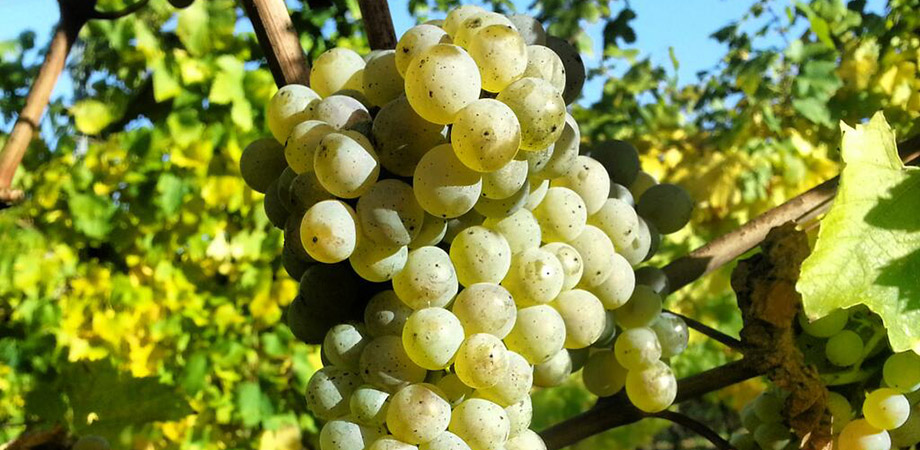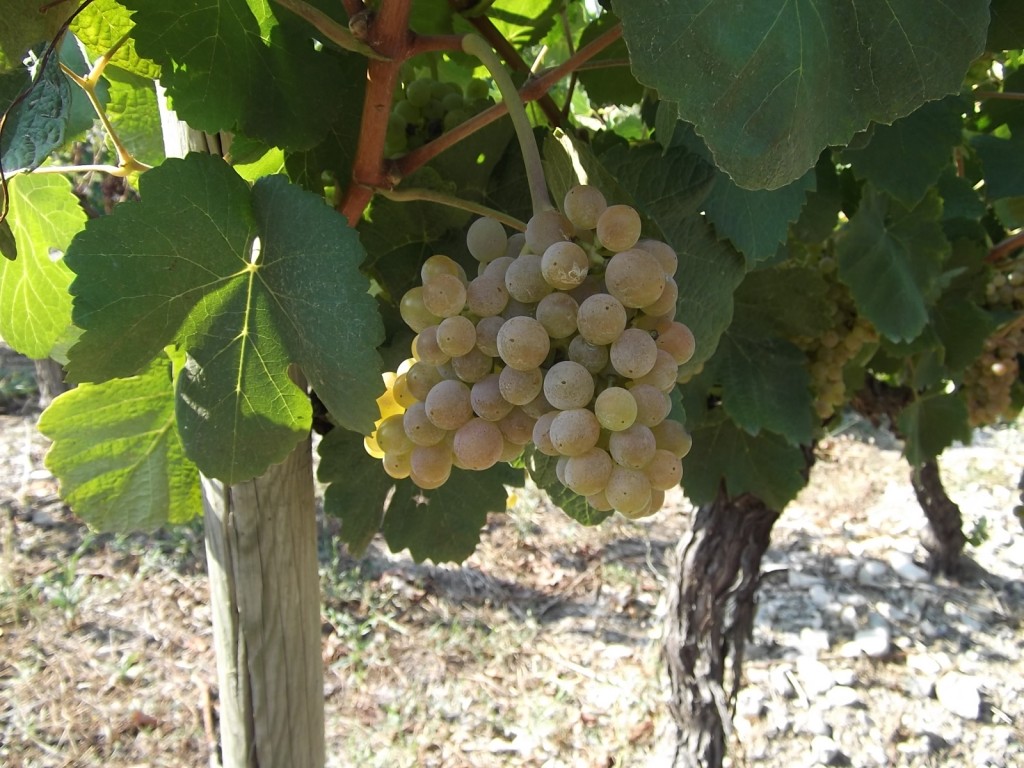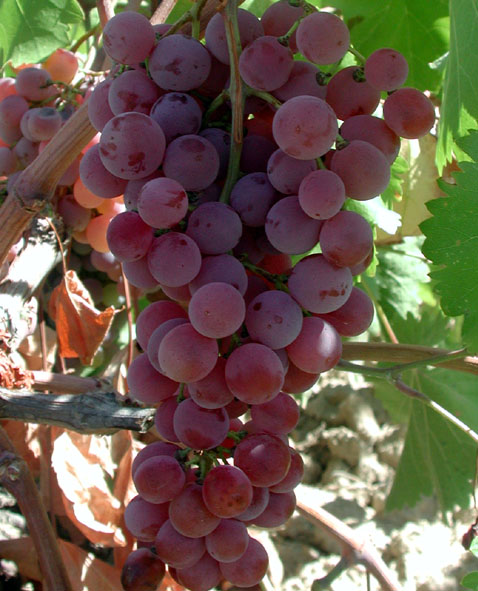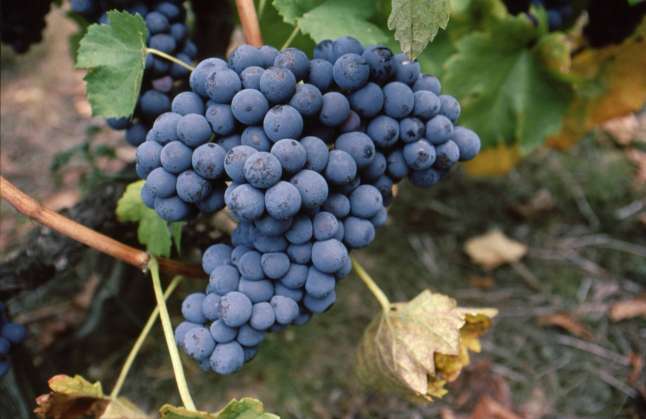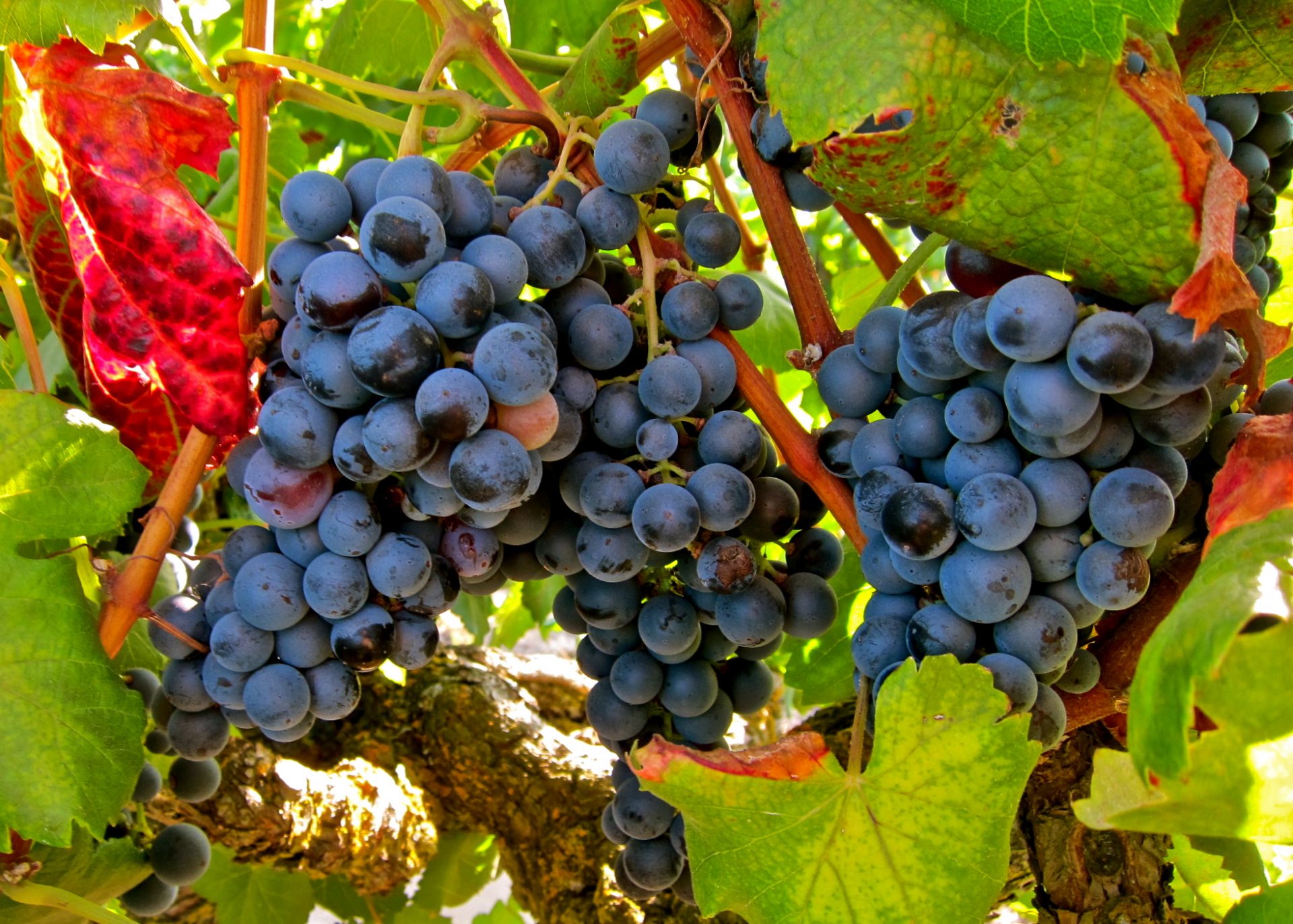
Perhaps worth another look at, the much-maligned Alicante Bouschet, here seen alongside its unique purple patched leaf colouring.
First cultivated by viticulturist Henri Bouschet way back in 1866, the Alicante Bouschet is a cross between Grenache and the rather obscure obscure Petit Bouschet.
Although rarely mentioned in the same breath as so many of the noble varietals, Alicante Bouschet has a pretty damn interesting history, a history that owes much to the fact that it belongs to a family of grapes known as the teinturiers. Teinturier means, quite literally “tinter” or “dyer”, and these particular types of grapes have both red flesh and red skin, a relative rarity in the world of red grapes. Other notable examples would be Saperavi and Dornfelder.
These types of grapes can bring some serious colour to a wine and are therefore often used in blends for exactly this reason. Indeed before falling out of favour in Europe the 20th Century, Alicante Bouschet was prized for the intense colouring it brought to the wines of the time, not to mention its incredibly easy-to-grow high-yielding vines that helped to rebuild a vinous Old World after the decimation brought about by Phylloxera.
Alicante Bouschet’s abundant pigmentation coupled with its thick skins made it the United States’ favourite table grape during the prohibition era. As the country was under the rulings of the Volstead act it was still legal for the head of a household to produce some 200 gallons of wine per year for their own use, and indeed it was this fact that allowed the California grape industry to remain buoyant from 1920 to 1933.
Alicante Bouschet’s protective thick skins made it the ideal grape for transportation eastwards to satiate the demands of the the country’s extraordinary number of new amateur winemakers. But it was with its red pulp that this lowly grape really came into its own. Unlike other varietals the grape could (in the comfort of one’s own home) be pressed a number of times, sugared, fermented and then diluted with a ridiculous amount of water to create something that bore a somewhat passing resemblance to red wine. Producing around 200 gallons of wine per tonne, 300 in the hands of an “expert”, Alicante Bouschet became, for reasons of bootleg winemaking alone, the most planted grape in California after the almighty Zinfandel.
With this in mind, you’ll still find Alicante Bouschet hidden away in many of California’s old vine Zinfandels, the grape being co-planted and utilised in field blends ever since its golden years in the early part of last century. Much of what is sometimes referred to as the up to 25% “Mixed Black” component is often Alicante Bouschet alongside Carignan, Petit Sirah, and occasionally Mourvèdre.
Despite its enviable colouring properties, Alicante Bouschet is often criticised for making wines that are lacking in depth and (believe it or not) alcohol. This is most probably due in no small part to the vines propensity for producing insanely high yields when left unchecked. Winemakers in certain parts of Spain, Portugal, and SW France are now experimenting with Alicante Bouschet, looking a specific site selection and limiting crop levels in an effort to produce something noteworthy from a varietal that looks as if it will end up in the history books as a colour booster, and very little else. Signs are promising, and who knows, perhaps we’ll see a full on renaissance of this grape variety sometime soon.
 Edinburgh-born/Toronto-based Sommelier, consultant, writer, judge, and educator Jamie Drummond is the Director of Programs/Editor of Good Food Revolution… And he’d like to taste another 100% Alicante Bouschet.
Edinburgh-born/Toronto-based Sommelier, consultant, writer, judge, and educator Jamie Drummond is the Director of Programs/Editor of Good Food Revolution… And he’d like to taste another 100% Alicante Bouschet.



